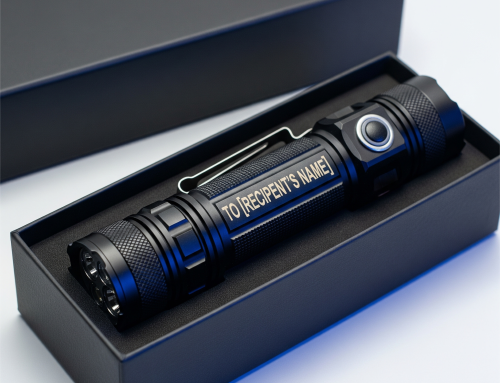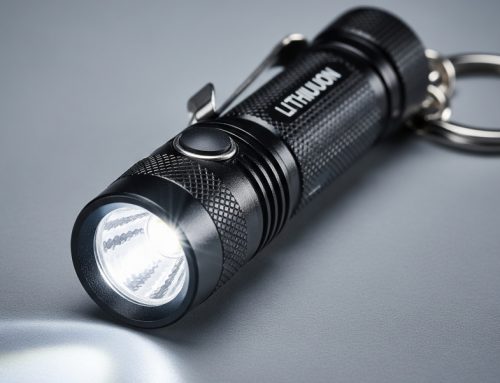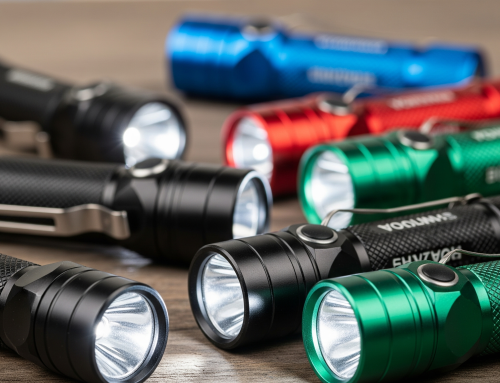In various industries, adhesive bonding is a critical part of product assembly and repair. Whether you’re working in electronics, jewelry, automotive, or medical fields, using UV-curable adhesives and UV flashlights to accelerate the curing process can bring several advantages. UV flashlights provide quick, efficient, and controlled adhesive bonding, which is essential for high-precision work. In this article, we will explore the benefits of using UV flashlights for curing adhesives and how they are transforming industries by improving productivity, quality, and bond strength.
Understanding UV Adhesive Curing and the Role of UV Flashlights
UV adhesive curing is a photochemical process that involves the use of ultraviolet (UV) light to activate the curing agent in UV-sensitive adhesives. When the adhesive is exposed to UV light within a specific wavelength range, it hardens almost instantly. UV flashlights emit light at wavelengths between 365nm and 395nm, which are optimal for activating these adhesives, enabling rapid curing.
This method eliminates the need for prolonged drying or heat curing, making it ideal for industries that require precision, speed, and reliable bonding. UV flashlights are portable, versatile, and easy to use, offering an efficient way to create strong, lasting bonds in a variety of applications.
Applications of UV Flashlights for Adhesive Curing
1. Electronics and PCB Assembly
The electronics industry demands precision and quick turnaround times. UV flashlights are essential tools in this sector, as they facilitate the curing of adhesives used in assembling electronic devices and components:
- Component Attachment: UV adhesives are used to attach components such as capacitors, resistors, and microchips to printed circuit boards (PCBs). UV flashlights cure the adhesive quickly, preventing component damage while speeding up the manufacturing process.
- Potting and Encapsulation: UV-curable adhesives are also used for potting and encapsulating circuit boards to protect sensitive components from moisture and external damage. UV curing ensures a tight, reliable bond without the need for prolonged drying.
2. Jewelry Making and Custom Crafts
Jewelry makers and artists have long relied on UV adhesives to create strong, durable bonds in their intricate pieces:
- Gemstone Setting: UV flashlights are used to quickly cure adhesive used in setting gemstones into metal or resin. The fast curing time allows jewelers to work with greater efficiency while ensuring the stones remain securely in place.
- Resin Art Projects: Artists use UV adhesives to create custom crafts, including resin jewelry, keychains, and other decorative items. UV flashlights cure the resin quickly, reducing the waiting time and ensuring that the projects have a professional finish.
3. Automotive Repair and Manufacturing
UV-curable adhesives are integral to the automotive industry, offering strong bonds that hold up under various environmental conditions:
- Windshield and Glass Bonding: UV flashlights are frequently used to cure adhesives that bond windshields and other glass components to the vehicle frame. The fast curing time ensures the bond is secure, reducing the time spent on repairs and assembly.
- Interior Component Bonding: UV flashlights also speed up the curing process when bonding various interior components like trim, dashboards, and upholstery. The ability to cure adhesives quickly is crucial in maintaining a high production rate in the automotive industry.
4. Medical and Dental Applications
In the medical and dental industries, where precision, hygiene, and speed are crucial, UV adhesives and flashlights are invaluable:
- Dental Bonding: UV adhesives are commonly used for bonding crowns, fillings, and orthodontic devices. By using a UV flashlight to cure the adhesive, dental professionals can ensure strong, durable bonds that enhance patient comfort and minimize treatment time.
- Medical Device Manufacturing: UV adhesives are used to bond medical devices, including surgical tools, wound dressings, and implants. The rapid curing time is especially important in medical environments, where quick, reliable results are critical for patient safety and care.
5. Glass and Plastic Bonding
UV adhesives are ideal for bonding glass and plastic materials, providing a clean, clear bond without the need for excessive heat:
- Glass Bonding: UV adhesives are used in a variety of glass applications, such as window repairs, display cases, and glassware manufacturing. The UV flashlight cures the adhesive rapidly, ensuring a strong, transparent bond.
- Plastic Bonding: UV flashlights are also used to cure adhesives that bond plastics to plastics or plastics to glass. The fast curing process ensures that the bond remains clear, strong, and durable.
Why UV Flashlights Are the Preferred Choice for Adhesive Curing
1. Speed and Efficiency
One of the primary reasons UV flashlights are favored for curing adhesives is their speed. Unlike traditional heat-curing methods that can take hours, UV light allows adhesives to cure within seconds. This quick curing time translates into faster production and repair cycles, making it possible to meet demanding deadlines without compromising on quality.
2. Precision and Control
UV flashlights offer precise control over the curing process, allowing users to focus the light exactly where it is needed. This is especially valuable in delicate applications where overexposure or spreading of the adhesive could cause defects. The ability to target the curing light with accuracy reduces material waste and ensures that only the necessary areas are bonded.
3. Minimal Heat Exposure
UV curing produces minimal heat, which is particularly important for working with heat-sensitive materials such as plastics, fabrics, or electronics. Unlike traditional curing methods, which often require high temperatures that could damage components, UV flashlights cure adhesives without risk of overheating.
4. Clean, Professional Results
UV adhesives generally cure without the need for solvents or additional chemicals, resulting in cleaner bonding processes and stronger, more durable bonds. The lack of solvents also reduces the risk of mess and improves the final product’s appearance by ensuring a neat, clear bond.
Choosing the Right UV Flashlight for Curing Adhesives
When selecting a UV flashlight for curing adhesives, it’s essential to consider factors such as:
- Wavelength Range: UV flashlights typically have wavelengths between 365nm and 395nm, which are ideal for curing most UV adhesives. A wavelength of 365nm offers higher precision, while 395nm is ideal for general curing tasks.
- Intensity: Higher-intensity UV flashlights can cure adhesives faster and are better suited for curing larger surfaces or thicker adhesives.
- Portability: If you need to use the UV flashlight on the go, select a compact and portable model that is easy to carry and handle.
- Durability: For industrial applications, durability is key. Choose a UV flashlight with a robust design that can withstand the demands of a heavy-duty work environment.
Why Tank007 UV Flashlights Stand Out
At Tank007, we offer a range of high-quality UV flashlights designed to meet the needs of professionals across industries. Our UV flashlights are known for:
- Reliable Performance: Our flashlights emit consistent, optimal UV light for fast and efficient adhesive curing, ensuring excellent results.
- Durability: Built with tough, impact-resistant materials, our flashlights are perfect for industrial and outdoor use, even in challenging environments.
- Portability and Convenience: Lightweight and compact, our flashlights can easily be taken wherever needed, making them ideal for both on-the-job and field applications.
Visit Tank007.com to discover our range of UV flashlights and find the perfect tool for your adhesive curing needs. With Tank007, you can trust that your adhesive bonds will be fast, precise, and long-lasting.



